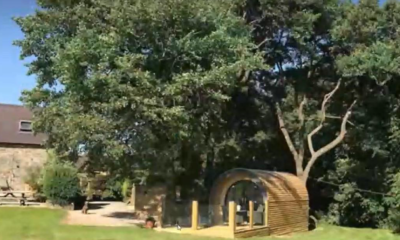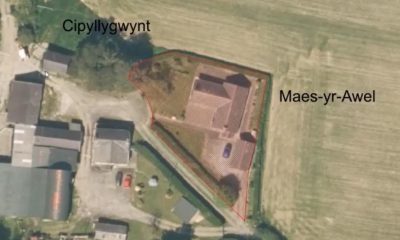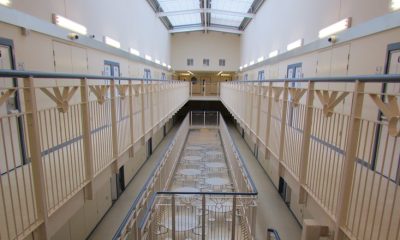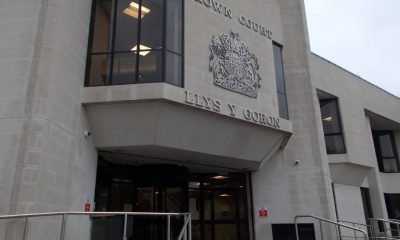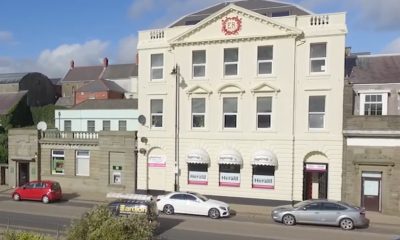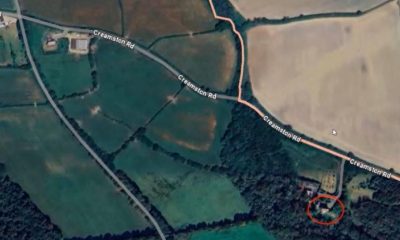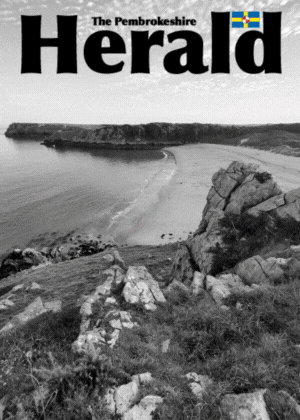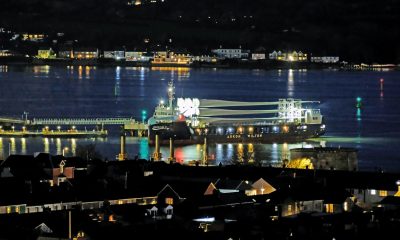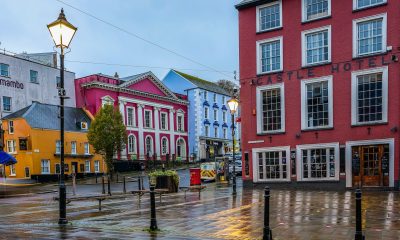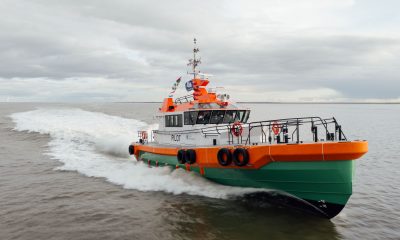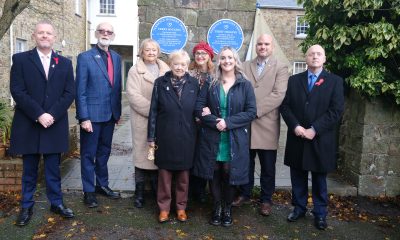News
Simon Hart under pressure to explain swastikas on election sign
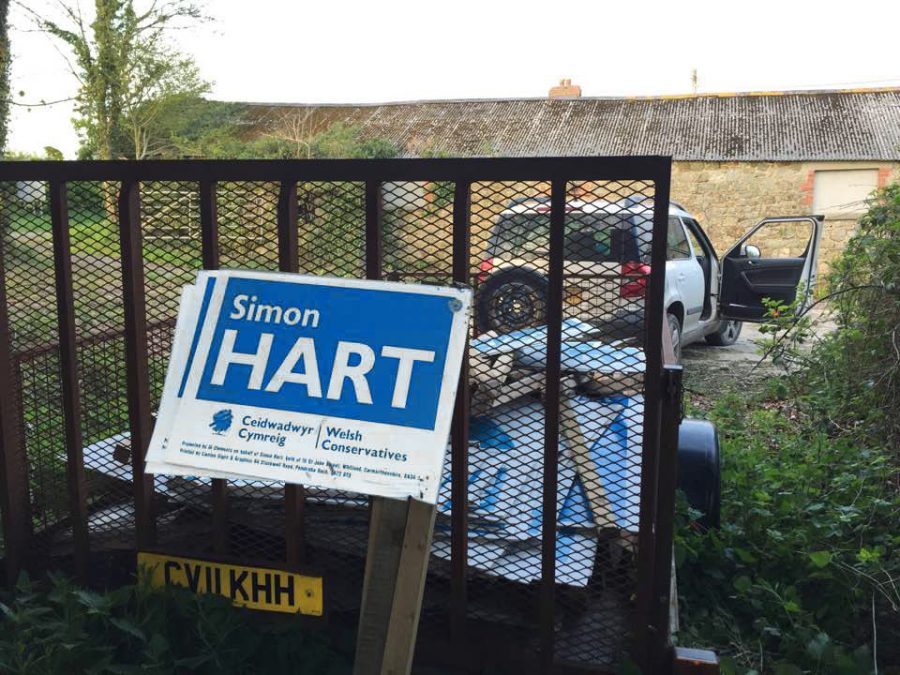
THE RE-ELECTION campaign of south-county MP Simon Hart is mired in controversy, as the Tory flatly refuses to publicly respond to speculation over who daubed swastikas on his own campaign material whilst in his own possession.
Carmarthen West and South Pembrokeshire’s nine-year incumbent, hoping to retain his seat in next month’s election, is coming under increasing pressure to explain the appearance of the Nazi icons on a poster he had removed from public display two years ago.
During his successful campaign at the June 2017 snap general election, Mr Hart gained national press coverage after publicly sharing a photograph of written graffiti on one of his small roadside promotional billboards.
After Simon Hart’s name on the placard, a black marker pen had been used to daub in block-capitals the words: “WILL STARVE YOUR NAN AND STEAL HER HOUSE!”
The graffitiing episode generated some sympathy for Mr Hart, who has turned the affair into a campaigning platform since 2017.
He has revisited the matter numerous times, even in the House of Commons – during parliamentary debate on life in public service and the abuse of political candidates, after gaining a seat on the Standards in Public Life Committee as a result of his experience.
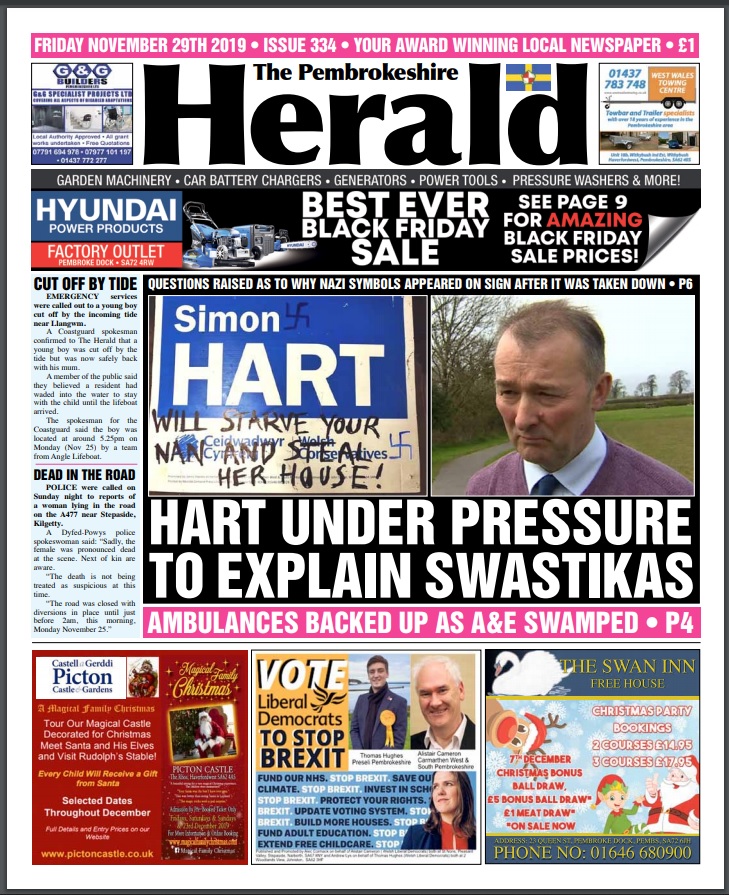
Criticising what he called the “criminal damage” in 2017, Mr Hart also claimed he had “Nazi swastikas daubed over [his] election boards in Carmarthenshire, between Pendine and Laugharne”.
No photographs of the alleged swastikas were publicly shared on social media by Mr Hart then, or since.
As part of his current campaign, Mr Hart posted, on his Facebook page, a new photograph of the “…will starve your nan…” defaced poster on November 3, stating that he is “determined that the tone and nature of this election should be a big improvement on 2017”.
In his emotive 650-word post accompanying the defaced poster image, Mr Hart says abuse in public life “is hard to hide from, can be anonymised, and can have a debilitating impact on work colleagues, family and friends”.
He also puts out the appeal: “I want to invite my challengers at this election, irrespective of their views or allegiances, to publicly endorse standards of behaviour that have been proposed by organisations such as the Committee for Standards in Public Life (of which I was a member) and the Jo Cox Foundation”.
Among the list of nine standards Mr Hart promotes, and pledges to abide by, is that: “Candidates and their supporters must set and protect a tone of public discourse which is not dehumanising or derogatory”.
But an eagle-eyed opponent of Mr Hart, Jim Scott, noticed that the “…will starve your nan…” poster has been crudely embellished since it was widely shared after being originally photographed by Mr Hart in June 2017.
For its 2019 outing, it is clear by comparison to earlier images of the ‘nan’ placard that two swastikas have been added, in blue marker pen, where not one appeared before.
Mr Scott, a strong critic of the Conservatives who has been chiefly involved in anti-austerity rallies as part of the Pembrokeshire People’s Assembly, says Mr Hart needs to explain how this could happen long after the already-defaced poster had been taken down from public display and kept in safe storage by Mr Hart over the last two years:
“You can tell by the handwriting that this is exactly the same placard being shared by Simon Hart, yet somehow in the intervening two years, two swastikas have been added to it. Who had the opportunity to do it? Who did it? And why?”
Our editor put Mr Scott’s views in writing to Mr Hart, along with a more serious theory that has been speculated online to account for the additions. Mr Hart gave the matter short shrift – responding only to dismiss the matter as mere election mischief from his political opponents.
Promoted by prime minister Boris Johnson to government minister at the Cabinet Office this summer, Simon Hart says he is REFUSING to give a public statement or explanation for the Nazi graffiti. We reproduce in full his brief written response:
“Really?! I have to say even by Corbynista standards arguing about this reaches new depths. I am not going to say anything public whatsoever. Totally outrageous and hope you treat it with suitable contempt!”
At the Herald we believe that the onus is on Mr Hart to end speculation. That, as a seasoned campaigner, senior political figure, and latterly government minister, he owes his prospective constituents a clear, credible, on-the-record explanation for the swastikas’ appearance LONG AFTER he had taken the poster down from public display.
This is a sentiment shared by Jim Scott, who describes Mr Hart’s repeated references to the defacing of his 2017 election material as “Simon Hart’s hobby horse”.
He says: “The question for Simon is: Who drew the swastikas between June 3, 2017 when he first published a photo of the ‘nan’ poster, and November 3, 2019 when he shared a photo of the same poster on Facebook, but this time with two swastikas added to it, when previously there wasn’t a single one?”
Mr Scott said: “Mr Hart’s use of the poster – however the swastikas got there – is a classic case of the big bully playing bullied which won’t wash with the people of Carmarthenshire and Pembrokeshire who need a credible explanation”.
Mr Scott shared his findings on Facebook, where many others said they, too, had noticed the unexplained addition of the shocking Nazi imagery.
“All very mysterious”, says one, whilst another speculates that Mr Hart could claim the offensive penmanship is the handiwork of “the Russians!”
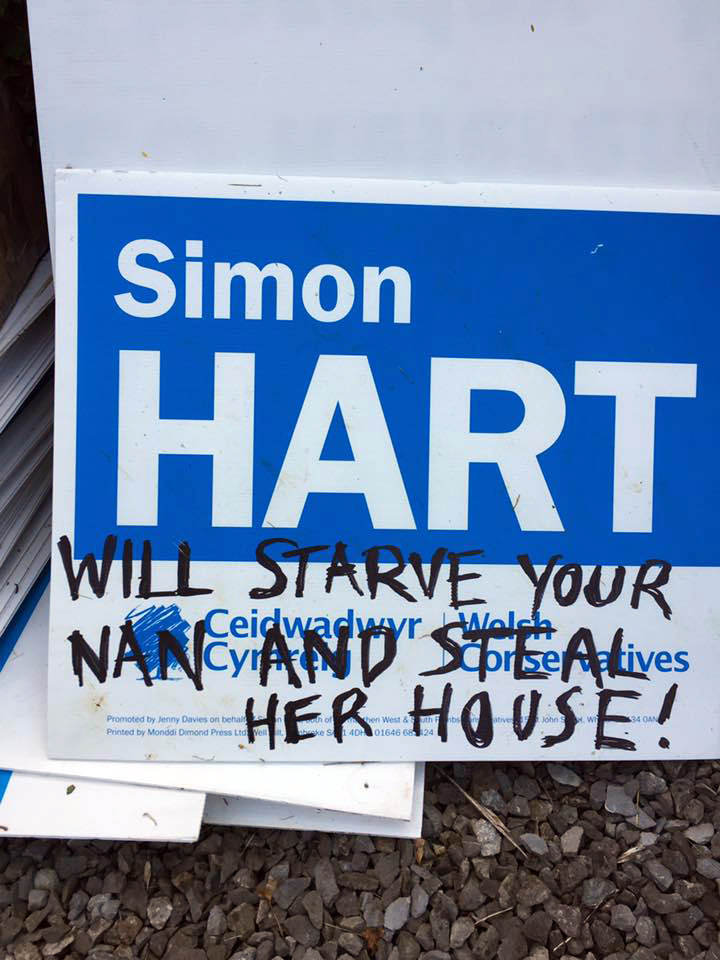
As it was: The graffitied ‘nan’ placard, published by Mr Hart on June 3, 2017

As it is now: Two swastikas have been added to the ‘nan’ placard by November 3, 2019
THE SWASTIKA SAGA IN BRIEF
MR HART, who has served as parliamentarian for Carmarthen West and South Pembrokeshire since defeating incumbent Labour MP Nick Ainger in 2010, is hoping to defend his slimmest majority yet.
In 2017 his majority was 3,110 over his Labour party rival Marc Tierney, a candidate he will be facing in two weeks’ time, along with the Lib Dems’ Alistair Cameron and Plaid Cymru’s Rhys Thomas.
– Mr Hart originally shared an image of the ‘nan’ placard on social media on June 3, 2017
– It says “SIMON HART WILL STARVE YOUR NAN AND STEAL HER HOUSE!”
– Although not photographed and shared by Mr Hart, he claimed he had swastikas daubed on his posters, too
– The story is picked up by the local and national press
– Then-PM Theresa May discusses Mr Hart’s case, and the issue of political abuse
– Mr Hart gains a seat on the parliamentary Standards in Public Life Committee as a result of his experience, exploiting the affair to bring attention to dirty campaigning tactics
– Mr Hart kickstarts his 2019 re-election campaign with an appeal for civility
– His 650-word emotive appeal uses the now-altered image of the ‘nan’ poster
– This image, dated November 3, 2019, is of the same ‘nan’ placard
– Eagle-eyes spot that the defaced poster now has TWO SWASTIKAS ADDED to it
– Questions mount: who had the opportunity to further deface the placard, once in Mr Hart’s possession, and who, in fact, added the offensive icons?
– Mr Hart REFUSES to make ANY public statement, says questions are “totally outrageous” and: “I am not going to say anything public whatsoever”.

This week’s cartoon in The Pembrokeshire Herald featured the Simon Hart story.
Crime
Swansea man dies weeks after release from troubled HMP Parc: Investigation launched
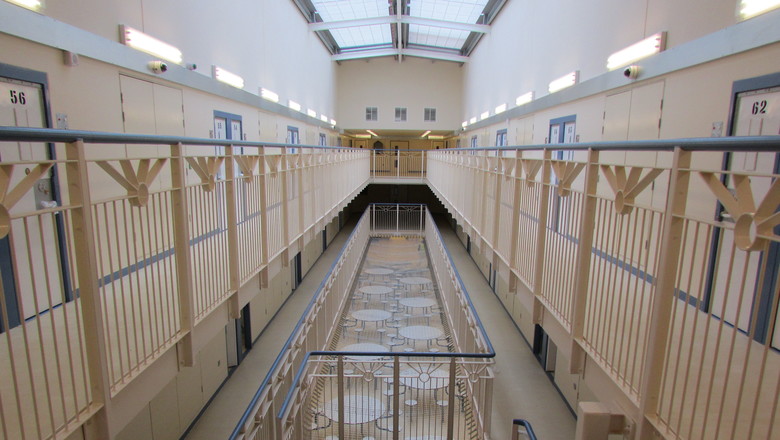
A SWANSEA man has died just weeks after being released from HMP Parc, the Bridgend prison now at the centre of a national crisis over inmate deaths and post-release failures.
Darren Thomas, aged 52, died on 13 November 2025 — less than a month after leaving custody. The Prisons and Probation Ombudsman (PPO) has confirmed an independent investigation into his death, which is currently listed as “in progress”.
Born on 9 April 1973, Mr Thomas had been under post-release supervision following a period at HMP/YOI Parc, the G4S-run prison that recorded seventeen deaths in custody in 2024 — the highest in the UK.
His last known legal appearance was at Swansea Crown Court in October 2024, where he stood trial accused of making a threatening phone call and two counts of criminal damage. During the hearing, reported by The Pembrokeshire Herald at the time, the court heard he made threats during a heated call on 5 October 2023.
Mr Thomas denied the allegations but was found guilty on all counts. He was sentenced to a custodial term, which led to his imprisonment at HMP Parc.
Parc: A prison in breakdown
HMP Parc has faced sustained criticism throughout 2024 and 2025. A damning unannounced inspection in January found:
- Severe self-harm incidents up 190%
- Violence against staff up 109%
- Synthetic drugs “easily accessible” across wings
- Overcrowding at 108% capacity
In the first three months of 2024 alone, ten men died at Parc — part of a wider cluster of twenty PPO-investigated deaths since 2022. Six occurred within three weeks, all linked to synthetic drug use.
Leaked staff messages in 2025 exposed a culture of indifference, including one officer writing: “Let’s push him to go tomorrow so we can drop him.”
Six G4S employees have been arrested since 2023 in connection with alleged assaults and misconduct.
The danger after release
Deaths shortly after release from custody are a growing national concern. Ministry of Justice data shows 620 people died while under community supervision in 2024–2025, with 62 deaths occurring within 14 days of release.
Short sentences — common at Parc — leave little time for effective rehabilitation or release planning. Homelessness, loss of drug tolerance and untreated mental-health conditions create a high-risk environment for those newly released.
The PPO investigates all such deaths to determine whether prisons or probation failed in their duties. Reports often take 6–12 months and can lead to recommendations.
A system at breaking point
The crisis at Parc reflects wider failures across UK prisons and probation. A July 2025 House of Lords report described the service as “not fit for purpose”. More than 500 people die in custody annually, with campaigners warning that private prisons such as Parc prioritise cost-cutting over care.
The PPO investigation into the death of Darren Thomas continues.
Crime
Woman stabbed partner in Haverfordwest before handing herself in
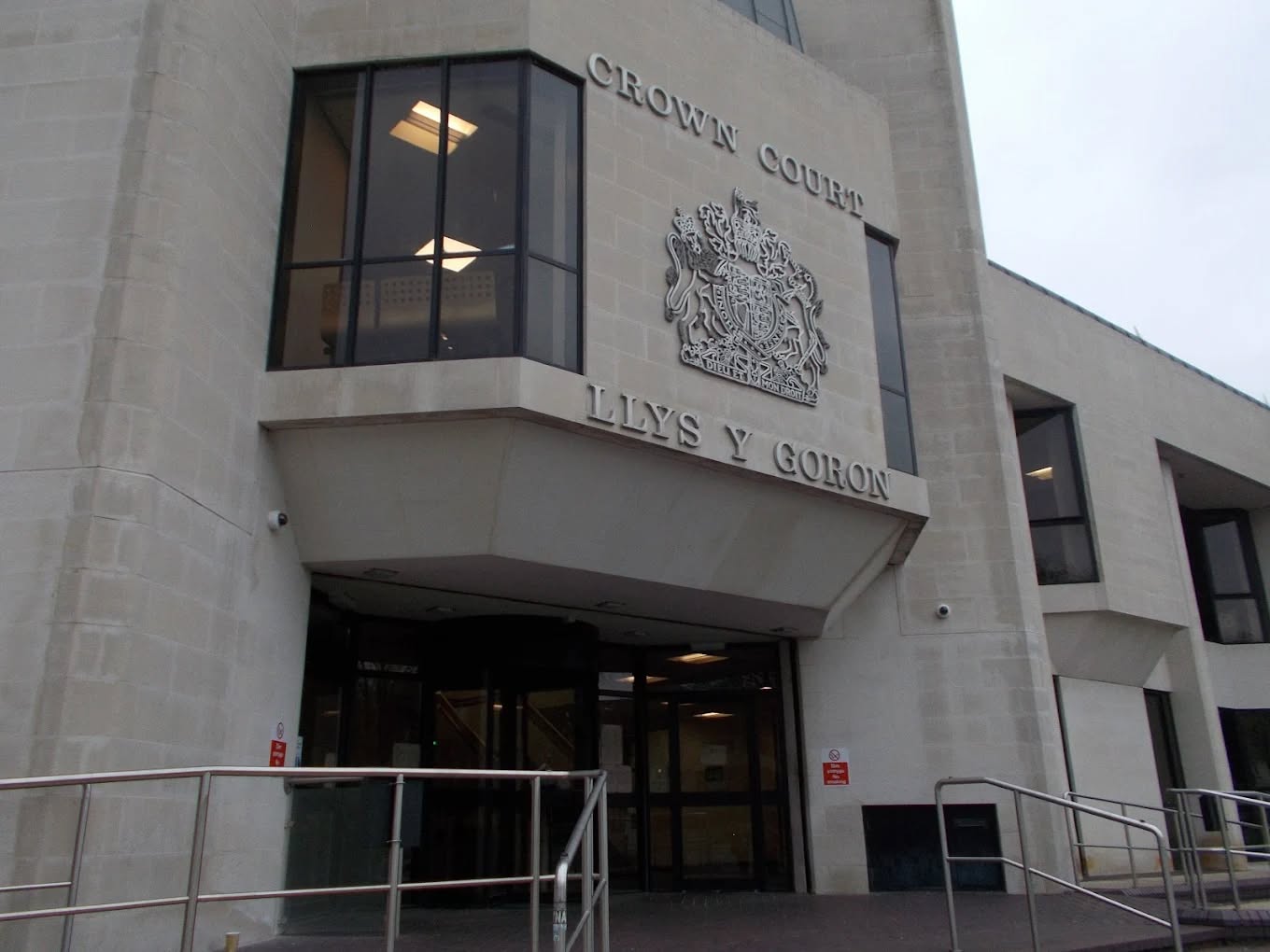
A WOMAN who stabbed her partner during a drug-fuelled episode walked straight into Haverfordwest Police Station and told officers what she had done, Swansea Crown Court has heard.
Amy Woolston, 22, of Dartmouth Street in Milford Haven, arrived at the station at around 8:00pm on June 13 and said: “I stabbed my ex-partner earlier… he’s alright and he let me walk off,” prosecutor Tom Scapens told the court.
The pair had taken acid together earlier in the day, and Woolston claimed she believed she could feel “stab marks in her back” before the incident.
Police find victim with four wounds
Officers went to the victim’s home to check on him. He was not there at first, but returned shortly afterwards. He appeared sober and told police: “Just a couple of things,” before pointing to injuries on his back.
He had three stab or puncture wounds to his back and another to his bicep.
The victim said that when he arrived home from the shop, Woolston was acting “a bit shifty”. After asking if she was alright, she grabbed something from the windowsill — described as either a knife or a shard of glass — and stabbed him.
He told officers he had “had worse from her before”, did not support a prosecution, and refused to go to hospital.
Defendant has long history of violence
Woolston pleaded guilty to unlawful wounding. The court heard she had amassed 20 previous convictions from 10 court appearances, including assaults, battery, and offences against emergency workers.
Defending, Dyfed Thomas said Woolston had longstanding mental health problems and had been off medication prescribed for paranoid schizophrenia at the time.
“She’s had a difficult upbringing,” he added, saying she was remorseful and now compliant with treatment.
Woolston was jailed for 12 months, but the court heard she has already served the equivalent time on remand and will be released imminently on a 12-month licence.
News
BBC apologises to Herald’s editor for inaccurate story
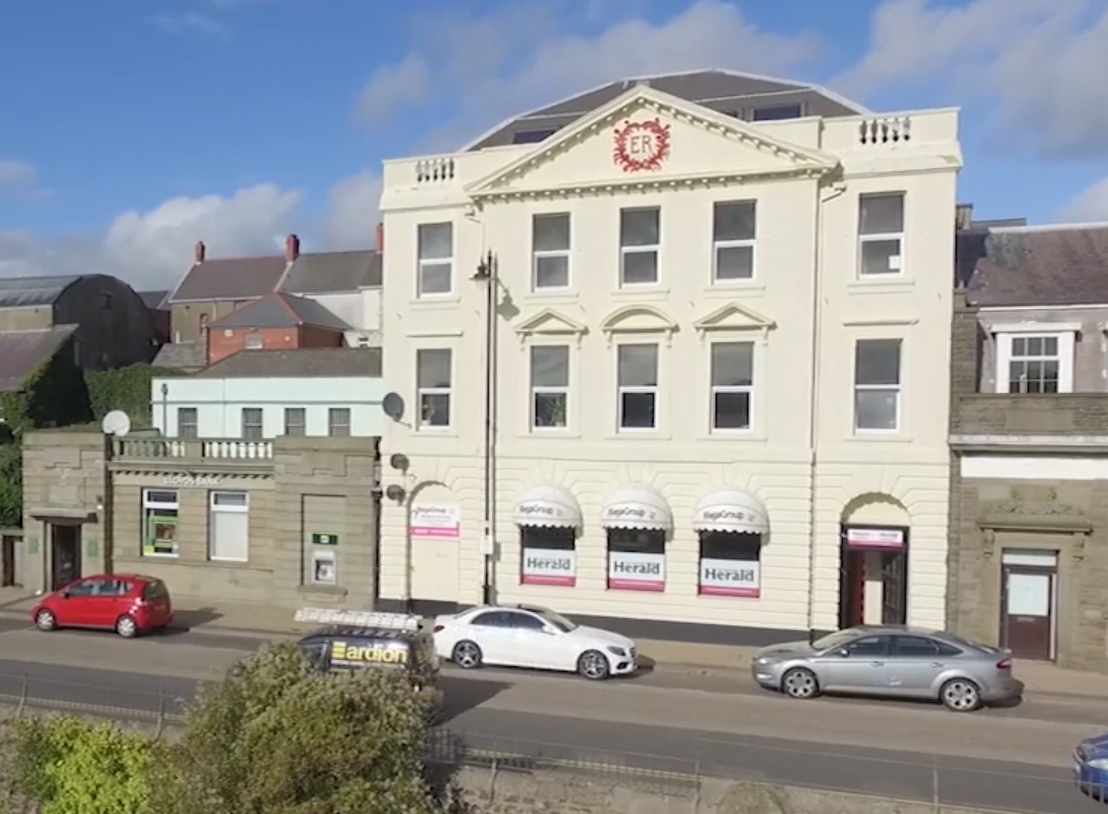
THE BBC has issued a formal apology and amended a six-year-old article written by BBC Wales Business Correspondent Huw Thomas after its Executive Complaints Unit ruled that the original headline and wording gave an “incorrect impression” that Herald editor Tom Sinclair was personally liable for tens of thousands of pounds in debt.

The 2019 report, originally headlined “Herald newspaper editor Tom Sinclair has £70,000 debts”, has now been changed.
The ECU found: “The wording of the article and its headline could have led readers to form the incorrect impression that the debt was Mr Sinclair’s personal responsibility… In that respect the article failed to meet the BBC’s standards of due accuracy.”
Mr Sinclair said: “I’m grateful to the ECU for the apology and for correcting the personal-liability impression that caused real harm for six years. However, the article still links the debts to ‘the group which publishes The Herald’ when in fact they related to printing companies that were dissolved two years before the Herald was founded in 2013. I have asked the BBC to add that final clarification so the record is completely accurate.”
A formal apology and correction of this kind from the BBC is extremely rare, especially for a story more than six years old.
-

 Crime2 days ago
Crime2 days agoDefendant denies using Sudocrem-covered finger to assault two-month-old baby
-
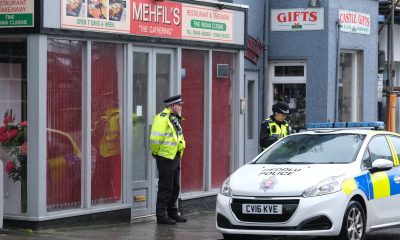
 Crime2 days ago
Crime2 days agoPembroke rape investigation dropped – one suspect now facing deportation
-

 News2 days ago
News2 days agoBaby C trial: Mother breaks down in tears in the witness box
-

 Crime7 days ago
Crime7 days agoMan denies causing baby’s injuries as police interviews read to jury
-
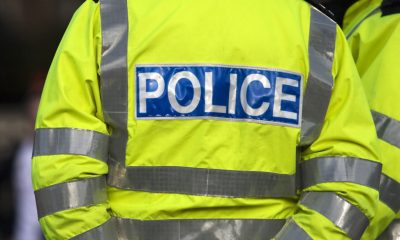
 Crime2 days ago
Crime2 days agoLifeboat crew member forced to stand down after being assaulted at Milford pub
-

 Crime3 days ago
Crime3 days agoDefendant denies causing injuries to two-month-old baby
-
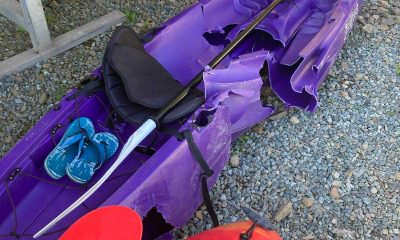
 Crime3 days ago
Crime3 days agoPembrokeshire haven master admits endangering life after speedboat collision
-
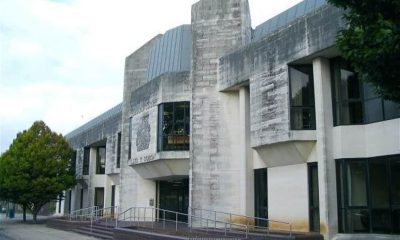
 Crime20 hours ago
Crime20 hours agoMother admits “terrible idea” to let new partner change her baby’s nappies alone







